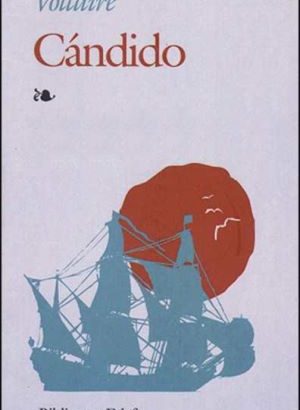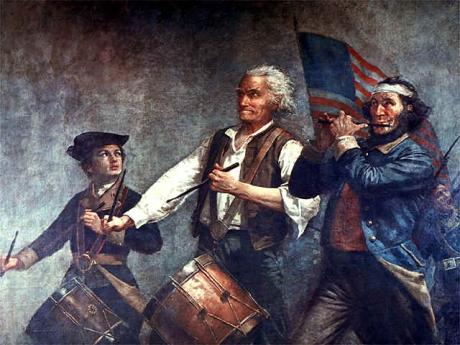América del Norte/Estados Unidos/04 de Julio de 2016/Autor: Steven/Fuente:Libcom.org
RESUMEN: Alrededor de 1776, ciertas personas importantes en las colonias inglesas hicieron un descubrimiento que resultaría de enorme utilidad para los siguientes doscientos años. Ellos encontraron que mediante la creación de una nación, un símbolo, una unidad legal llamada los Estados Unidos, podrían hacerse cargo de la tierra, las ganancias y el poder político de los favoritos del Imperio Británico. En el proceso, que podrían contener una serie de rebeliones potenciales y crear un consenso de apoyo popular para el gobierno de un nuevo liderazgo privilegiada.
Cuando nos fijamos en la revolución americana esta manera, se trataba de una obra de un genio, y los Padres Fundadores merece el homenaje impresionado que han recibido durante los siglos. Ellos crearon el sistema más eficaz de control nacional ideado en los tiempos modernos, y mostraron las futuras generaciones de líderes de las ventajas de combinar el paternalismo con el comando.
A partir de la Rebelión de Bacon en Virginia, por 1760, había habido dieciocho levantamientos contra gobiernos coloniales. También había habido seis rebeliones negras, desde Carolina del Sur a Nueva York, y cuarenta revueltas de diversos orígenes.
Por este tiempo también, surgió, según Jack Greene, «estable, coherente, eficaz y reconocido élites políticas y sociales locales.» Y por la década de 1760, este liderazgo local vio la posibilidad de dirigir la mayor parte de la energía rebelde contra Inglaterra y sus funcionarios locales. No fue una conspiración consciente, sino una acumulación de respuestas tácticas.
Around 1776, certain important people in the English colonies made a discovery that would prove enormously useful for the next two hundred years. They found that by creating a nation, a symbol, a legal unity called the United States, they could take over land, profits, and political power from favorites of the British Empire. In the process, they could hold back a number of potential rebellions and create a consensus of popular support for the rule of a new, privileged leadership.
When we look at the American Revolution this way, it was a work of genius, and the Founding Fathers deserve the awed tribute they have received over the centuries. They created the most effective system of national control devised in modern times, and showed future generations of leaders the advantages of combining paternalism with command.
Starting with Bacon’s Rebellion in Virginia, by 1760, there had been eighteen uprisings aimed at overthrowing colonial governments. There had also been six black rebellions, from South Carolina to New York, and forty riots of various origins.
By this time also, there emerged, according to Jack Greene, «stable, coherent, effective and acknowledged local political and social elites.» And by the 1760s, this local leadership saw the possibility of directing much of the rebellious energy against England and her local officials. It was not a conscious conspiracy, but an accumulation of tactical responses.
After 1763, with England victorious over France in the Seven Years’ War (known in America as the French and Indian War), expelling them from North America, ambitious colonial leaders were no longer threatened by the French. They now had only two rivals left: the English and the Indians. The British, wooing the Indians, had declared Indian lands beyond the Appalachians out of bounds to whites (the Proclamation of 1763). Perhaps once the British were out of the way, the Indians could be dealt with. Again, no conscious forethought strategy by the colonial elite, hut a growing awareness as events developed.
With the French defeated, the British government could turn its attention to tightening control over the colonies. It needed revenues to pay for the war, and looked to the colonies for that. Also, the colonial trade had become more and more important to the British economy, and more profitable: it had amounted to about 500,000 pounds in 1700 but by 1770 was worth 2,800,000 pounds.
So, the American leadership was less in need of English rule, the English more in need of the colonists’ wealth. The elements were there for conflict.
The war had brought glory for the generals, death to the privates, wealth for the merchants, unemployment for the poor. There were 25,000 people living in New York (there had been 7,000 in 1720) when the French and Indian War ended. A newspaper editor wrote about the growing «Number of Beggers and wandering Poor» in the streets of the city. Letters in the papers questioned the distribution of wealth: «How often have our Streets been covered with Thousands of Barrels of Flour for trade, while our near Neighbors can hardly procure enough to make a Dumplin to satisfy hunger?»
Para continuar con la lectura, visite: https://libcom.org/history/peoples-history-american-revolution












 Users Today : 2
Users Today : 2 Total Users : 35460355
Total Users : 35460355 Views Today : 2
Views Today : 2 Total views : 3419102
Total views : 3419102